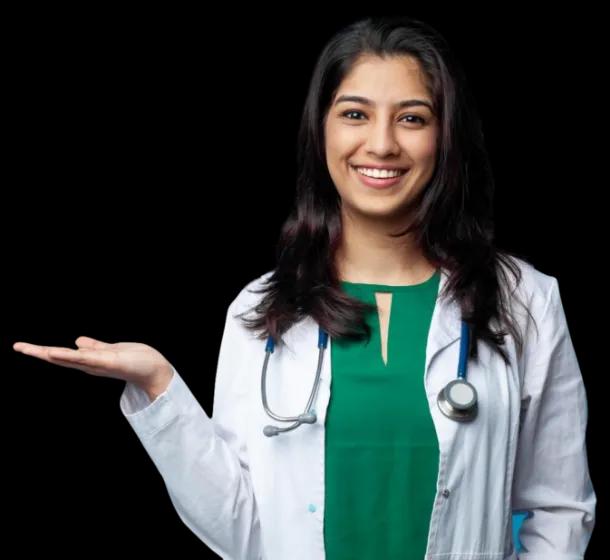What Is The Main Cause Of Varicose Veins?
In This Article
What Is The Main Cause Of Varicose Veins?
Jaymala
Updated on March 06, 2024
Medically verified by Dr. Pournami
Fact checked by Dr. Arya

Vascular
5 min read
Varicose veins are a common condition faced by many people. It can affect daily activities in one way or another
Are you someone experiencing the same? If yes, you must know that while the formation of varicose veins can be reduced by staying physically active and maintaining a healthy lifestyle, there are many other factors which may lead to varicose veins.
Ever wondered what those causes could be? What all can be the threats? What can we do to prevent them?
Well, Mykare Health is here to provide you with detailed information on the potential causes. Join us as we explore the main causes of varicose veins and how to tackle them.
Genetic Factors
Genetic factors affect the structure and function of the veins including their elasticity and strength. Such factors may be responsible for abnormalities or weakening of the vein valves. The condition may be inherited by one or both parents, if they have varicose veins.
Weak or Damaged Vein Walls
Damaged or weak vein walls can lead to the formation of varicose veins.
When the walls of the veins are weak, they lose the ability to push blood back to the heart, leading to blood pooling in the veins. As a result the veins become swollen, and visible under the skin.
Dysfunction Of Venous Valves
Venous valves are one-way valves within the veins which help maintain regular blood flow towards the heart.
When the valves become dysfunctional, they fail to prevent the backward flow of blood, which results in insufficient working of the venous valves. It causes the blood to pool in the veins, resulting in varicose veins.
 6 min read
6 min readUnderstanding the Stages of Varicose Veins: Symptoms and Progression
 5 min read
5 min readBeneficial Exercises For Varicose Veins: Tips And Routines
 5 min read
5 min readVaricose Veins Medicine: Benefits and Potential Side Effects
Book Your Consultation Now
Hormonal Changes
-
Hormonal changes during puberty, pregnancy, menstruation, and menopause can cause varicose veins.
-
Women experience significant hormonal shifts under these scenarios that can affect vein elasticity and function.
-
During pregnancy also, there is extra pressure on the veins, due to increased levels of estrogen and progesterone, resulting in venous insufficiency.
-
Hormonal contraceptives may also contribute to the development of varicose veins.
-
While hormonal changes particularly affect women, men can also experience varicose veins due to hormonal imbalances.
-
Managing hormonal fluctuations through lifestyle modifications, and medical interventions can help reduce the complications associated with the formation of the varicose veins.
Prolonged Standing or Sitting
-
Sitting or standing for long hours reduces blood circulation, causing blood to pool in the veins, especially in the lower part of the body, resulting in the formation of the varicose veins.
-
Occupations that involve prolonged standing, such as teaching, nursing, and retail, as well as jobs requiring long hours of sitting, such as office work and driving, pose a higher risk of varicose vein development.
-
Taking regular breaks to stretch, elevate the legs, and engage in light physical activity can help improve circulation and reduce the likelihood of varicose veins.
Obesity
Obesity or excess weight definitely contribute to increased pressure on the veins, resulting in venous insufficiency. The added pressure can weaken vein walls, causing blood to pool in the veins and contribute to the formation of varicose veins.
Weight loss through diet, exercise, and lifestyle modifications can help reduce venous pressure and lower the risk and severity of varicose veins due to obesity.
Lack Of Physical Activity
As it is said, exercise is the key to maintaining good health both physically as well as mentally. It is important to allow proper blood circulation throughout the body.
-
Sedentary lifestyle and lack of physical activity can result in poor muscle tone and inability of proper venous blood flow.
-
Engaging in activities such as walking, jogging, swimming, or cycling promotes muscle strength and cardiovascular health, reduces the formation of varicose veins.
-
Office workers or those who spend long hours sitting, should take regular breaks for stretching and movement to prevent venous stagnation. They should try to maintain an active lifestyle.
Age-Related Changes
Varicose veins may develop with age. As people grow older, the veins may lose elasticity, leading to low efficiency in blood circulation. There may be reduced physical activity due to aging, which can result in the formation of varicose veins.
Adopting a healthy lifestyle can help manage symptoms and lower the risk of formation of venous disease.
Gender
-
Varicose veins are more common in women than in men. Aging may be a factor in the case of men.
-
Hormonal fluctuations, especially estrogen and progesterone, play an important role in the higher chances of formation of varicose veins.
-
Women who have had multiple pregnancies or those who are overweight or obese are at a higher risk of developing varicose veins.
-
They can include regular exercise, weight management, elevation of the legs, and wear compression stockings, if there is such condition.
Other Factors
There may be various other factors discussed below, contributing to the formation of varicose veins:
-
Injury to the veins can weaken vein walls, increasing the risk of varicose veins.
-
Deep vein thrombosis is a condition involving the formation of blood clots in the deep veins of the legs, leading to the development of varicose veins.
-
Increased abdominal pressure can reduce blood flow from the lower part, leading to the formation of varicose vein formation.
-
Occupations such as nursing, teaching, hospitality, and construction work, where individuals are standing for long hours.
-
Smoking can damage blood vessels and result in vascular insufficiency.
-
Hypertension can exert pressure on the heart and blood vessels, contributing to venous insufficiency and the development of varicose veins.
Genetic inheritance can lead to the formation of varicose veins. Weak walls of the veins can lead to swelling and twisting leading to formation of varicose veins.
Weak or insufficient valves hinder proper blood flow and lead to blood pooling in the veins.
Hormonal imbalances can weaken vein walls and valves.
Long periods of standing or sitting, obesity, and aging can increase the risk of varicose veins.
Lack of physical activity weakens calf muscles, inhibiting blood circulation and resulting in the formation of varicose veins.
Injuries to veins, abdominal pressure, smoking, occupational factors, and hypertension can all contribute to varicose vein development.



